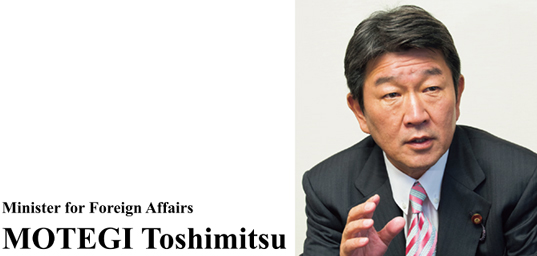Foreword
We have annually published the White Paper on Development Cooperation for around 40 years in order to inform not only development cooperation experts in Japan and other countries but also the people in Japan of the situation of implementation of Japan’s development cooperation policy and trends of discussions on assistance in international forums with data.
Progress has been made in many issues including education and healthcare by development assistance from Japan and other developed countries. In the mid-1980s, approximately 40% of the world’s population lived in extreme poverty. However, today this figure has gone down to around 10%. Japan was the top donor from 1991 to 2000, but now it is in fourth place in the world. Due to the severe financial situation following the collapse of Japan’s bubble economy, the ODA budget has shrunk to half from the peak.
With globalization, the challenges the developing countries face in their economic development and global issues such as income gaps, terrorism, refugees, infectious diseases, environment and climate change, and maritime issues such as plastic litter are becoming more diverse and complex. It is said that there is a global annual funding gap of $2.5 trillion to achieve the Sustainable Development Goals (SDGs) adopted by the United Nations in 2015. In addressing these issues, we should utilize the capacities, funding and wisdom of various actors, including private sectors, local governments, universities and NGOs, in addition to ODA.
In order to further advance “diplomacy from a panoramic perspective of the world map,” which Japan has been promoting from the position of “Proactive Contribution to Peace,” I would like to conduct “diplomacy with a sense of caring and robustness.” Rather than imposing a specific way of thinking, I would like to keep the “sense of caring” by considering, together with other countries, how to realize sustainable development while respecting the history and culture fostered by each country. I would also like to demonstrate our “robustness” to the international community by taking the lead in the maintenance and strengthening of the free and open international order.
We are steadily advancing initiatives toward the realization of a “Free and Open Indo-Pacific” by strategically utilizing ODA in the Indo-Pacific region, which has become the center of global dynamism, from the perspective that a free and open maritime order based on the rule of law is the cornerstone for stability and prosperity in the international community. To give an example of recent efforts, we now see significant increase in the container handling volume due to the development of Sihanoukville Port in Cambodia, as well as the traffic volume due to the repair of the bridge on Route 9 in the Lao PDR. These projects are appreciated as major contributions to improve east-west connectivity, which is essential for the autonomous development of the Mekong region.
Development cooperation is an important tool to realize Japan’s “diplomacy with a sense of caring and robustness.” Japan has provided development assistance while thinking together and advancing together with developing countries. Every time when I hear the words of gratitude and affection for Japan’s support from various recipients, I reaffirm my belief that the strategies of Japan’s development assistance have led to the trust in Japan.
In order to build a better future in the world, it is necessary to push autonomous economic growth by developing human resources to support the new age and building institutions. Japan’s development cooperation is not merely the simple provision of funding and materials. By providing advanced technologies and systems, as well as the maintenance and management knowhow possessed by Japan’s public and private sectors, we build the capability of local technicians and experts and create new employment. This strategy is the main merit of Japan’s assistance. It is based on mutual trust between Japan and developing countries, and enhances Japan’s presence in the world and benefits Japan’s economy.
This year, we put a subtitle on this White Paper for the first time, which is “Building a better future by connecting the world.” Looking back on the past, Japan’s postwar recovery began with our textile industry exporting the products abroad. This was the first step of Japan’s economic reintegration into the world. Part I covers major international conferences held in 2019, such as the G20 Osaka Summit, the Seventh Tokyo International Conference on African Development (TICAD7), and the SDG Summit held at the United Nations, as well as the initiatives and efforts endorsed in these conferences, including quality infrastructure, education and human resources development, and innovation. Furthermore, we opened the door to the public for ideas and opinions on this White Paper, which were duly reflected. There are special pages featuring the photographs displayed at the “Global Festa JAPAN 2019,” which many people participated in.
In the new era of Reiwa, we will continue to show our leadership in development cooperation and actively address global issues, with the understanding and cooperation of the people of Japan. We will further promote Japan’s unique strategy of cooperation, which connects the countries and regions in the world to build a better future.
March 2020

